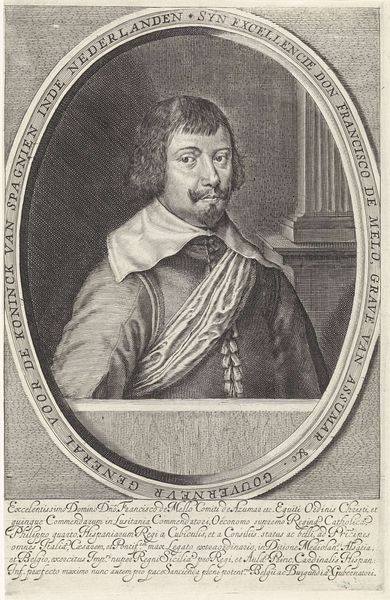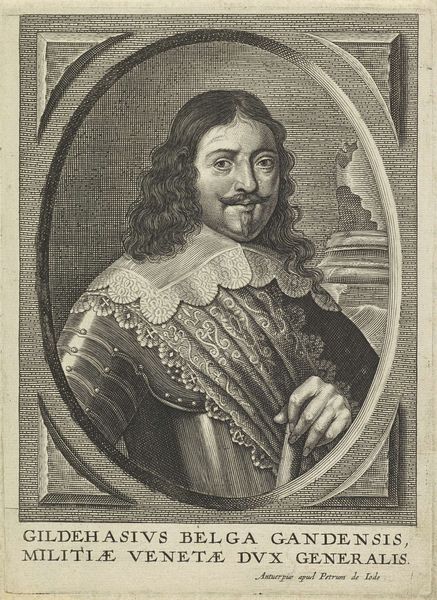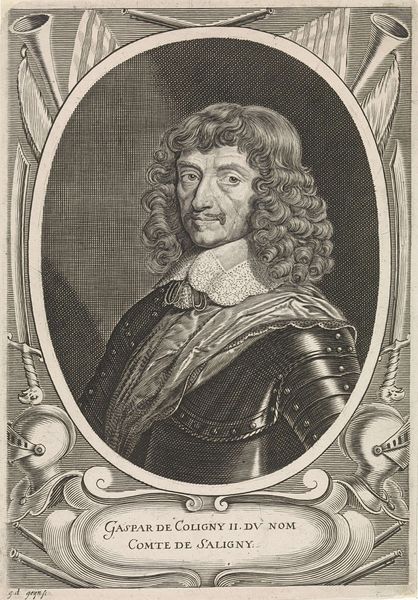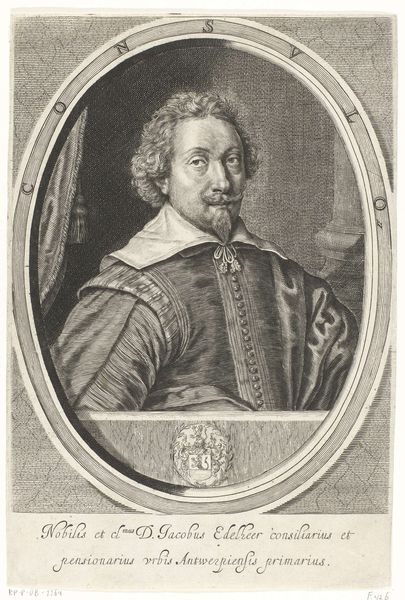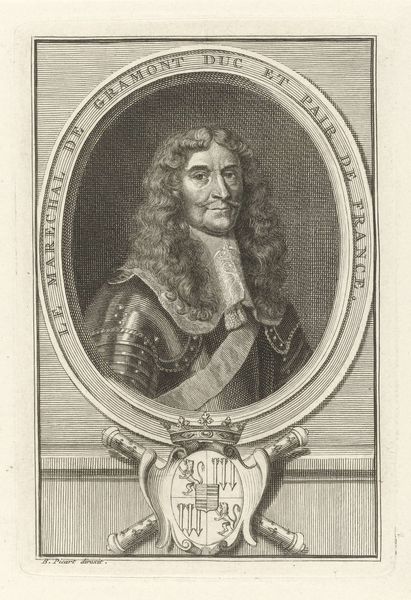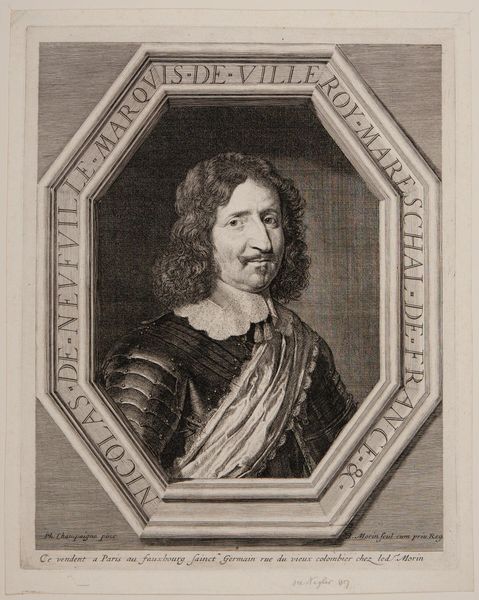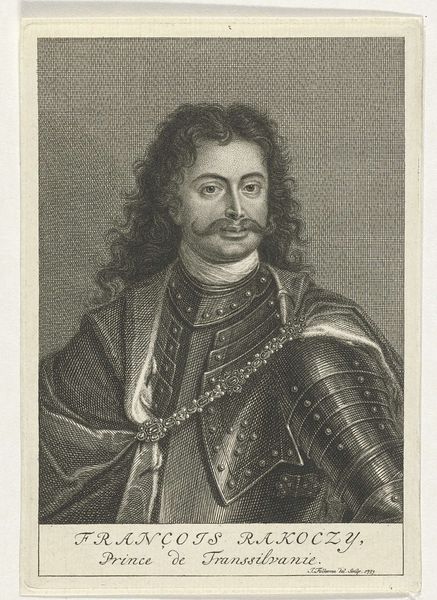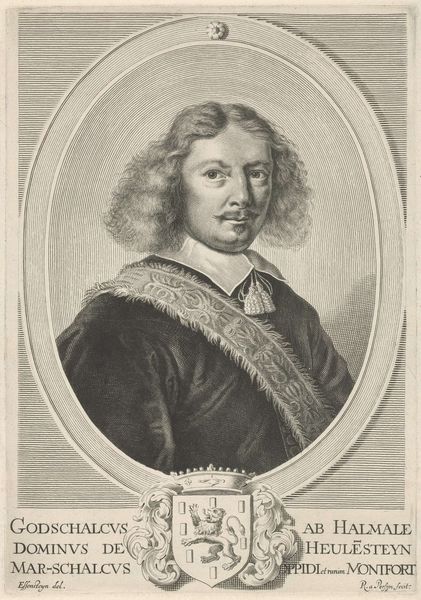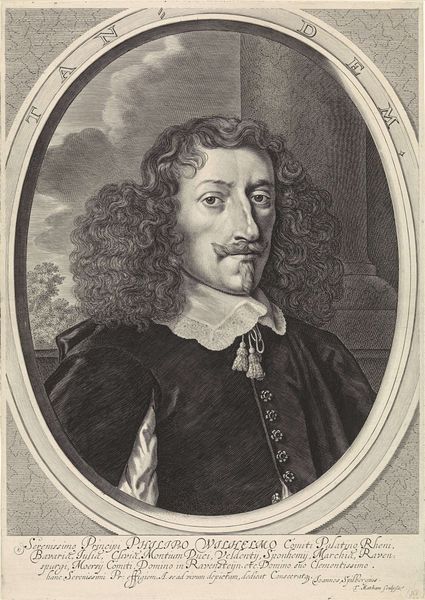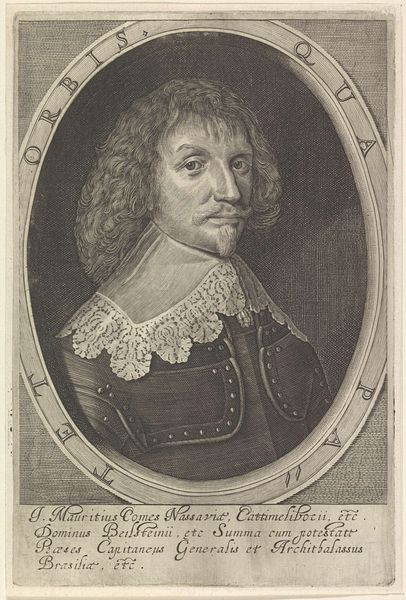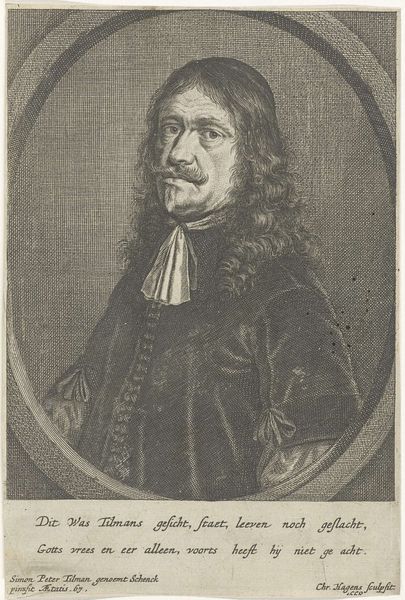
metal, engraving
#
portrait
#
baroque
#
metal
#
history-painting
#
engraving
Dimensions: height 176 mm, width 120 mm
Copyright: Rijks Museum: Open Domain
Editor: This is "Portret van Lius Méndez de Haro" from the period of 1650 to 1670, engraved on metal by Cornelis Meyssens, hanging at the Rijksmuseum. The crispness of the lines in this engraving is really striking. What can you tell me about it? Curator: Well, immediately, the material tells us something about its accessibility. An engraving like this, produced via the labor of a skilled craftsman and circulated on metal plates, suggests a means of disseminating portraiture far more broadly than a painted portrait would allow. Who do you think might have consumed these? Editor: Presumably, those interested in politics or the sitter's status, but perhaps not wealthy enough to commission a painting themselves? So, a burgeoning middle class, maybe? Curator: Precisely. Notice also the emphasis on the subject's attire – the armor, the draped fabric. What do these details convey to you about his status, and perhaps more interestingly, about the engraver's perception of status? Is it idealized? Accurate? Propaganda? Editor: It looks quite deliberate; a visual shorthand for power and nobility. I suppose the metal reflects that idea somehow. Did the choice of metal influence perceptions of the artwork itself at that time? Curator: Absolutely. Metal implied permanence, reproducibility, and, by extension, a wider distribution of the image and the ideals it promoted. It was less about unique artistic genius and more about skillful reproduction, a kind of early mass media. We can interpret it as more of a craft, and maybe even an early form of corporate branding. Editor: So the material tells us as much, if not more, than the subject alone. That's fascinating! Curator: Exactly. Looking closely at the *how* and *what* of materials and processes really unlocks new avenues for understanding historical works.
Comments
No comments
Be the first to comment and join the conversation on the ultimate creative platform.
